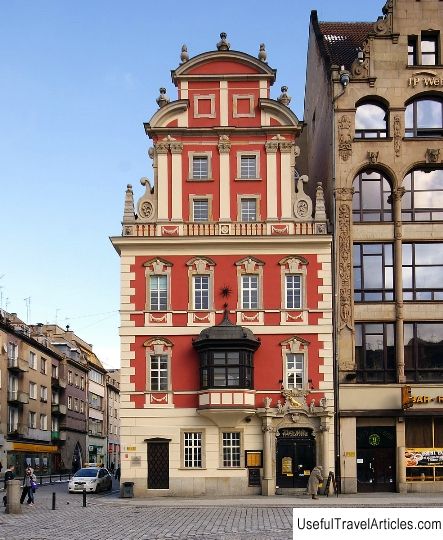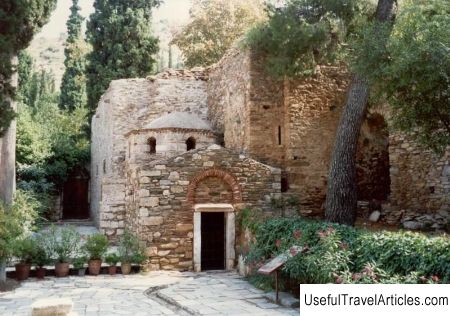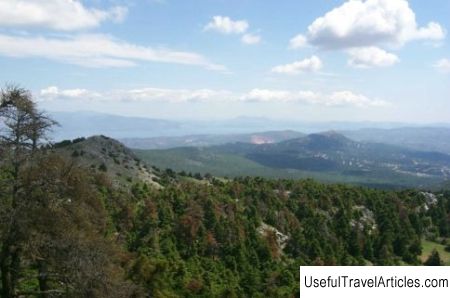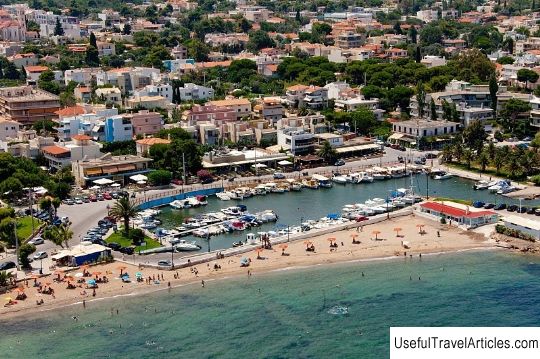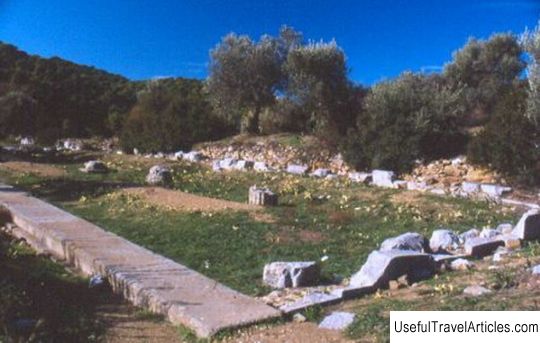Daphni Monastery description and photos - Greece: Attica
Rating: 8,5/10 (790 votes) 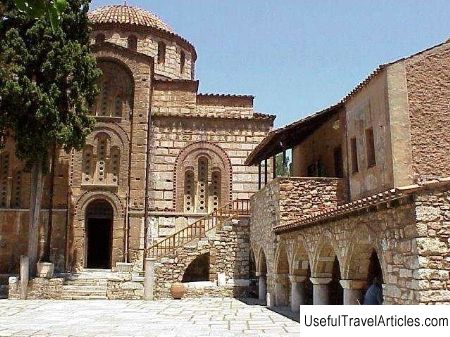
Daphni Monastery description and photos - Greece: Attica. Detailed information about the attraction. Description, photographs and a map showing the nearest significant objects. The name in English is Daphni Monastery. Photo and descriptionApproximately 11 km from the center of Athens in the town of Haidari (a suburb of Athens), next to the picturesque Daphnian grove, there is one of the most famous Orthodox shrines in Greece and one of the most important monuments of Byzantine architecture - Daphni Monastery . Daphni Monastery was founded in the 6th century on the site of the sanctuary of Apollo, destroyed in 395. Some of the architectural fragments of the ancient sanctuary were partially used as building material, including the Ionic columns, of which today you can see only one in the monastery, since the rest were taken to England in the 19th century by Lord Elgin. However, from the original and very small monastery, little has survived to this day, and the structure that can be seen today most of it was built after the middle of the 11th century. The large-scale construction of the monastery complex began around 1080 during the heyday of the Byzantine Empire. The katholikon, an octagonal cross-domed church with a vestibule, belongs to this period. The Exonartex was built somewhat later, probably at the beginning of the 12th century. The monastery complex received some architectural additions in the 13th century, after the monks of the Catholic order of the Cistercians settled in the monastery until 1458, when the Turks captured Athens and, by the decision of the Sultan, the monastery was returned to the Orthodox Church. In the 19th century, a military garrison was located in the Daphne monastery for some time, and then an institution for the insane was built within its walls. In 1887 and 1897. the monastery was seriously damaged by earthquakes. During the same period, the Greek Archaeological Society was thoroughly engaged in the study of the ancient monastery. In 1990, Daphne Monastery, together with such famous monuments of Byzantine architecture as Nea Moni and Osios Lucas, entered the UNESCO World Heritage List. It is worth noting that Daphne Monastery gained worldwide fame largely thanks to its beautiful and beautiful the excellent Byzantine mosaics (late 11th - early 12th century) with images of biblical scenes, saints and prophets that have survived to this day. The so-called Sacred Way, the road from Athens, once ran near the monastery to Eleusis, along which participants of the solemn procession marched many centuries ago during the legendary Eleusinian mysteries.       We also recommend reading Cathedral of St. Peter (Cathedrale Saint-Pierre) description and photos - Morocco: Rabat Topic: Daphni Monastery description and photos - Greece: Attica. |
